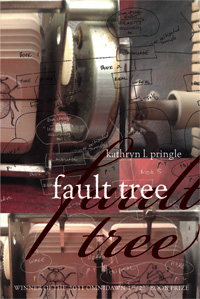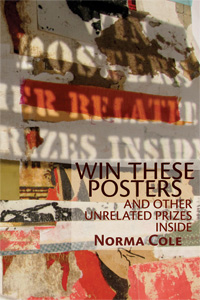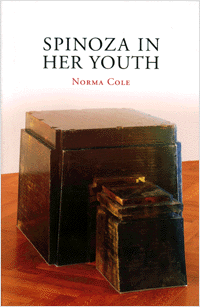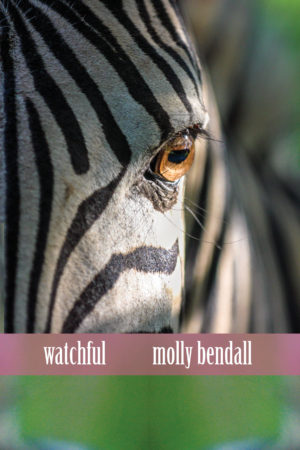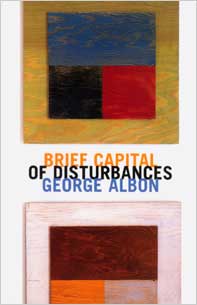Description
Winner of the 2011 Omnidawn 1st/2nd Poetry Book Prize
fault tree is a book-length poem divided into three connected effects stemming from one undesired state: time. This text poses time as a governing body overthrown by a simple mental repositioning—only ‘inescapable’ because so few have tried to escape. Using interrupted narrative and a deceptively simple diction, the poem follows one character through his quest to wrangle time and prove his own sanity as well as time’s true nature. Through his relating to time, questions of place, class, politics, and culture are cast as the inextricable results of time’s manipulation.
In kathryn l. pringle’s fault tree, the sina qua non of time is nested in the figure of the speaker. Some would call him a quixotic time traveler, diagnosed and medicated accordingly for a debilitating fixation on time and its “lessness” in which all of us have to situate our persuasively finite states. Some would say the case for simultaneity is convincing—everything occurring at the same time everywhere, and for the infinite as well—no beginning, middle or end. The speaker “recovers” but doesn’t surrender. “You wake up or you wake up//most people wake up.” The language is beautiful in its plainness coeval with branching analytical digressions of time out of mind. A compelling wackiness attaches to the voice, and as with any resistant, sensitive patient, all systems are at risk of becoming transparent: “the government wanted us lit up/ so we could light up/ which is important when yr being taught to kill/ or having to think about killing/ having been raised not to/ think or kill.” What if a perceptional swerve were empirically shown to be the last barrier to “the company transition[ing] us to robots.” This is a wondrous, unnerving book.
C.D. Wright, judge of the 2011 Omnidawn 1st/2nd Poetry Book Prize
We are all too late to read kate pringle’s brilliant, funny, harrowing fault tree. We are certainly all at fault, though staggering toward a light through the fault, brave and true. Now here. Now there. For this reader, I no longer care what time it is. I will no longer sleep when tired. I just want to read more kate pringle.
Gillian Conoley, author of The Plot Genie
The soldier and the psychotic, one willingly, the other, not, conflate their bodies with the body politic, with the state. Revisiting the terrain of traumatized unconscious a la Artaud, Plath, and Kommunyaka, kathryn l. pringle’s fault tree explores, in a series of fragments that will not have been stanzas, the failure of sensation to resolve itself into perception (“i see what i think i see/ engagement takes practice”), the failure of temporality to be abstracted as time (it is “never 9:30”), and the failure of spatial relations to coalesce into space (“suffice it to say/each space/was made/a place of words//and each place was made/a container of US”). Indeed, only near the end, in a state approaching “health,” in a series of couplets, can the narrator “miss the days of containment” in every sense of the word. Divided into three books, fault tree contains its beginning (“i did not like the version of myself that was raised firmly middle-class…/so I grew up poor white trash”) and ending (“or am i now a speck/of something that was?”) as a series of reductions (“a person can be a dot.”) Here, containment is a throat slit, a self killed, in short, a proleptic measure of best practices (“this happened in the future/in the future when i am alive”). Daring “the open out of/stutter,” fault tree is less trenchant self-excoriation than j’accuse (“you probably wonder why/it is so easy for you to believe this/or—you should”).
Tyrone Williams, author of Howell
Finalist for the 2013 Lambda Literary Award in Lesbian Poetry
About the Author
Reviews
Excerpt
Place, time, and identity figure largely in poet kathryn l. pringle’s work. A Californian raised by Minnesotans, she grew up in the seamlessly connected neighborhoods of California’s San Fernando Valley. She attended public school, played in neighborhood parks, hit the ground for drive-by shootings, and wondered at the ways in which public space and power sources were used to connect herself and her fellow inhabitants to one another. She often saw her neighborhood and her neighbors on television and this informed her notions about identity and reality—that they can be altered like suits and represented as absolutes. A drive-by shooting on the P.E. field at her sister’s junior high school sent the family packing to a new world, the high desert of the Antelope Valley, and it is in this disarming and surreal landscape that pringle learned to become a writer. She attended Antelope Valley College where for many semesters she dropped all her classes except for Literature and Poetry writing. She learned that what was real was often said not to be real: the Stealth fighter, visible in the sky, but said not to exist; the sonic booms of the space shuttle landing at Edward’s Air Force Base going unreported for days, only to be reported as “live” long after landing; the beauty of the desert concealing hundreds of fully operational meth labs. Charles Hood taught her about Pound and Stein and documentation. She came out of the closet. She watched her mother die. Soon, the desert became a place that she needed to escape and there were only a few ways out: pringle chose poetry. Wanting to move to a place with trees and literature, pringle applied to only one college, Sonoma State University, and was told she’d be lucky to get into it. Her grades were stellar, but her Ws outnumbered her As. Fortunately, Sonoma State accepted her, and off she went to Santa Rosa… into trees and words. It was there that she was able to match her poetry to her theories regarding identity by studying both. Gillian Conoley, DA Powell, and Terry Ehret challenged and nurtured her. She became a poet. After college, pringle attended San Francisco State University to study with Myung Mi Kim and then Stacy Doris. Myung taught her about the architecture of the poem on the page and Stacy taught her about grand plans and the enactment of ideas on the page. Dodie Bellamy taught her about moxy and gave her the books she had been missing: Microclimates, Dictee, Everybody’s Autonomy, and Spoke. In a way, these three women gave pringle the “permission” she needed to write what and how she wanted to write. It was at San Francisco State that she began writing her first book, RIGHT NEW BIOLOGY (Factory School, 2009), about colonialism, manifest destiny, and the nervous system of a culture identifying as one. Soon after graduating with her MFA and MA in Poetry Writing, pringle moved to Durham, NC. It is in Durham that she ultimately learned about time: the city has lots of it and the people know how to spend it. She spent her time writing and reading and hanging out with poets Chris Vitiello, Ken Rumble, Tony Tost, Dianne Timblin, Tanya Olson, and Guillermo Parra, enjoying the many poets, speakers, artists, films, and bands that Duke and the Triangle Area attracted. Being a Californian in Durham also meant that cities like Washington D.C., Baltimore, Philadelphia, and New York were easily accessible by car. Each of these cities and the poets in them taught pringle about space and what it means to be a writer. In 2009, pringle said goodbye to Durham and headed back west to the Bay Area. She currently lives in Oakland (but works “in” Durham) with her partner, dog, and cat. Oakland’s architecture and people have already inspired pringle’s latest project, a novel about place—city building, urban blight, survival, and revival are featured in the work. After all, there’s no escaping time and place.
A brief interview with kathryn l. pringle
(conducted by Rusty Morrison)
How/why did you begin fault tree?
I had been reading a lot of philosophy about place—much having to do with various creation storie—and wanting to write about the effects of place on human perception and vice versa. In my readings, I somehow came across Einstein’s 1905 essay entitled “On the Electrodynamics of Moving Bodies.” It is reading this essay that really inspired me to focus on time as actually taking place (meaning it happens and also occupies space). I wanted to explore “time” as something that has some weight and mass, that has an architecture—and I began writing around the idea. What came out of that writing was a very indeterminate kind of poetry—very disembodied and ethereal and abstract, which is a kind of work I love, but I wanted to write something that could be more directly linked to people and our daily lives. I wasn’t sure how I was going to do that for a while, so I continued reading and writing and waiting for a structure to show itself to me.
It didn’t take very long for it to come together. Soon after I began writing the book, my father became very ill. He woke up one day a different person, very suspicious that reality was not as it seemed and especially distrustful of time itself. Doctors thought he had mad cow disease or Creutzfeldt-Jakob disease and told us he had weeks left to live. I went to see him for one last visit and found he too was fixated on time. Time had become his enemy, but it was an enemy not because he was running out of time, it was and enemy because time itself was a trickster playing games with him. Fortunately, he recovered quickly from whatever was plaguing him, surprising his doctors and all of us. He is now very much himself again and doesn’t really remember anything about this brief mental lapse. It was in this way fault tree got its hero and voice: a simple but wise man trying to save himself and us all from the terrible reach of time.
I can see how your use of interrupted narrative is intimately linked with the book’s subject. How did your approach to using interrupted narrative evolve in the construction of this work?
Thematically speaking, it was crucial to keep the narrative either constantly in motion or completely still—time couldn’t be separated from place. Time is always happening and we are always experiencing it – past, present, future—on many levels. We are always in a place with it. Also, since the narrator is unable to experience time as linear due to his own relationship to it, the sequencing had to be circular.
Practically speaking, I have a full-time job and tend to write in spurts because of it. Like most writers, I often don’t have the luxury of writing for several hours each day, so I end up leaving a manuscript for days or weeks or months or writing three different manuscripts at the same time until my guts tell me “this is the book.” Once I have that feeling and a few solid pages written, I make a map for the book (the map for fault tree has been overlaid on the cover image) it will become. This allows me to write into different sections at different times—as my work schedule will allow—making it easier to temporarily leave sections behind if I’m feeling blocked.
Fault tree analysis fits the theme of the book as well as this kind of in and out schedule of writing. It allows for synchronicity and a looping /disjunctive narrative. So the basic structure of the book is divided into three books – each with a narrative leading to and from the narrator’s time-perception system “failure.”
Did the process of writing in this form impact, alter, subvert or enhance your own perception of time? your preconceived notions about time and reality?
Yes and no. I had already gained a great deal of insight on time simply by moving from the Bay Area to Durham, North Carolina. I suddenly found myself with more time than I ever had before. This fascinated me. Obviously, the days in NC are the same length as the days in CA… but I had more control over my time in NC than I did in CA. Why?
It was one of those very basic and yet somehow deeply profound revelations:
I have a choice in how I spend time.
It sounds silly, but it was incredibly empowering.
How did your use of deceptively simple diction aid you in this work?
I felt that, considering the subject matter, it was important for the narrator to be able to be vulnerable and likable and not irritatingly didactic. After all, he is spouting off about some of his deeply held beliefs and that could get to be a little frustrating for readers (and myself) after a while.
Also, his conception of time is actually very simple and for him to use (or the language of the book to use) a lofty or more technical diction wouldn’t have made sense because of this. His job is to break through the misconceptions others have about time—not create more—so I employed a simple but leading diction.
What, specifically, were some of the most interesting surprises you encountered or most daunting challenges you faced as you worked through the writing of this text? did you change as a writer, or in what you sought in your writing?
Honestly, I just had to make sure to let the book be so normal. My first book is a completely different animal with complex diction and an unwieldy structure. fault tree rolls out nicely. I had to let the narrator say things that made me cringe a little… I know it is a cliche, but I just really had to stay out of the way of the book and let it be as idiosyncratic and imperfect as it wanted to be.
I guess the biggest surprise to me was that writing this book led me to writing a novel. I don’t think I would have tried to write a novel if it weren’t for fault tree.
Would you tell me a bit about yourself?
A Californian raised by Minnesotans, I grew up in the seamlessly connected neighborhoods of California’s San Fernando Valley. I attended public school, played in neighborhood parks, hit the ground for drive-by shootings, and wondered at the ways in which public space and power sources were used to connect myself and my fellow inhabitants to one another. I often saw my neighborhood and my neighbors on television and this informed my notions about identity and reality—that they can be altered like suits and represented as absolutes.
A drive-by shooting on the P.E. field at my sister’s junior high school sent the family packing to a new world, the high desert of the Antelope Valley, and it is in this disarming and surreal landscape that I learned to become a writer. I attended Antelope Valley College where for many semesters I dropped all my classes except for Literature and Poetry writing. I learned that what was real was often said not to be real: the Stealth fighter, visible in the sky, but said not to exist; the sonic booms of the space shuttle landing at Edward’s Air Force Base going unreported for days, only to be reported as “live” long after landing; the beauty of the desert concealing hundreds of fully operational meth labs. Charles Hood taught me about Pound and Stein and documentation. I came out of the closet. I watched my mother die. Soon, the desert became a place that I needed to escape and there were only a few ways out: I chose poetry.
Wanting to move to a place with trees and literature, I applied to only one college, Sonoma State University, and was told I’d be lucky to get into it. My grades were stellar, but my Ws outnumbered my As. Fortunately, Sonoma State accepted me, and off I went to Santa Rosa… into trees and words. It was there that I was able to match my poetry to my theories regarding identity by studying both. Gillian Conoley, DA Powell, and Terry Ehret challenged and nurtured me. I became a poet.
Who are the authors with whom you feel a kinship? Who are you reading currently?
I’m currently reading a ton of civil engineering and urban planning books while working on a novel and a new poetry manuscript—both of which take up the general theme of space (again!).
As for poetry, I’ve recently fallen in love with Judith Goldman’s l.b.; or catenaries, Andrea Rexilius’s Half of What They Carried Flew Away, James Meetze’s DayGlo, Tyrone Williams’ Howell, some manuscripts in progress by Erika Staiti, Dianne Timblin, and Elise Ficarra… I’m super excited about pretty much anything Lynn Xu does. So many lately, these are just a few.
The writers I feel a kinship with (and haven’t really met) are Kafka and David Foster Wallace because of the paranoia and absurdity in their novels, Janice Lee because of her focus on science and humanity, and Lance Phillips because of his diction… but I also feel strong connections with writers, artists, architects, musicians, and health care workers based on friendship, subject matter, or just plain old admiration. Each of these people helps me shape my own ideas and read the world around me.
You chose the image that was one of the central elements used in the cover design for this book. Can you talk about your reasons for this choice?
Choosing the cover image was really hard. I was visiting poet Chris Vitiello in Durham and he had introduced me to some artists who showed me some images, which were great but didn’t really fit the book. I didn’t want an image that would cause the reader to approach the book with a particular narrative already in mind. Finally, the night before I left Durham, I noticed Chris’s adapted flipclock sitting on his bookshelf. It had the image of a bug on it and an image of some kind of bone diagram. At one point in the narrative, the narrator believes his house is bugged and the bones seemed to work as representing his suspect physiology…AND IT WAS A FLIPCLOCK! It was perfect! And it was completely dictated by that moment as the bone image was going to flip to a different image on the next minute. I snapped a few photos of it with my cell phone and sent the images to Cassie. I also remembered Cassie had been interested in seeing the book’s map, so I sent her that, too. She really took it from there… manipulated the images and placed my map overtop of them. Pure synchronicity!
fault tree represents a new kind of political poetry. But, like everything else in the book, the politics are refracted, torsed. “i did not, in fact, do anything” our speaker tells us, “but vote against the war / by voting against the man who would vote for the war // and then i got sent to war.” A Catch-22 illogic runs through this poem; in fact it permeates the entire narrative, just with a little less slapstick and a lot more slap.
By examining time—its ominous presence, its convoluted significance—the poet struggles with what cannot be seen, touched, or otherwise acknowledged, except time’s absence. pringle’s speaker has faith in the perception of what was and what will be, but not of what exists in the precise moment, for “you won’t see it / hanging there.”
… here comes kathryn l. pringle’s dizzying, suffocating, brilliant fault tree, and here I go again after it into awed uncertainty, a dream-like confusion— “the moment was like falling asleep. Sometimes I think I am asleep. But for the sleep’s duration…”—at once conspiratorial and blaring.
fault tree is a remarkable book for much more than its insight into such complexes of paranoiac (viz. real) projection and inversion. “Fault tree analysis” is the term for the method engineers use to examine high-level system failures and to calculate the probabilities of certain problems arising as certain subsystems and components within them break down. You make a tree diagram and trace the causal sequences through which failure occurs. (The cover of fault tree is overlaid with several copies of a plan of the book drawn as a fault tree diagram.) pringle considerably torques her metaphorical-conceptual vehicle by introducing ideas of nested temporalities and the like, such that the total collection of glitches inscribed by the fault tree all seem to be happening at once or slightly staggered, oscillating.
Fault Tree captures the contingencies of its analysis and transforms them into reciprocity. Thus, at first the reader may puzzle over who the narrator (or narrators) of this poetry is — the author? an historic figure? But this comes to matter less and less where moments of disorientation become part of a larger intersubjectivity and the reader inevitably implicates and identifies herself in the urgent quandaries the book presents. Despite their topicality, these poems reach right through specificities of context to knot the reader in the tangle of time and mortality.
kathryn l. pringle’s fault tree is a poetic big bang—a linguistic singularity, with seemingly infinite density, that expands exponentially into a universe, a dark swath of the brain lit up by neuronal firings. As the poem takes shape, time takes place, involuting like cortical folds. In a universe—in a psyche—time is endlessly distorted: eddying, bending, stuttering, paralleling, slowing, and speeding. This lean work, which needs all the white space it makes, covers vast expanses of mathematical and philosophical thought by way of a convincing and engagingly idiosyncratic voice.
once the moment came it was too late to go back to the moments before
it. that’s the problem with time. we can’t control it.
it had been my desire to remain in the pre-moment state but time
disallowed this. vehemently. i took precautions. i invested in the pre-
moment. i built a future in the moment that came before the moment
that undid the future that was never to be a moment. and now i walk
away from the nonmoment directly toward foreseeable moments. it is
the commonness that kills me. each moment. it has been hard living
since the pre-moment. daily reminders of the same things. the daily wait.
there isn’t much here that i don’t know—that i’m not accustomed to.
sometimes i wonder if maybe i’m supposed to be learning to appreciate
the beating that the daily habits of others inflicts upon me. perhaps i was
too pleased with myself. before the moment.
the moment was like falling asleep. sometimes i think i am asleep. but for
the sleep’s duration…

